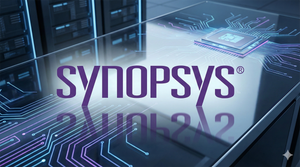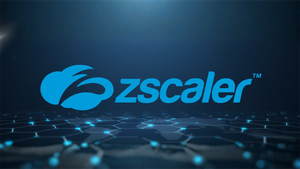
The global semiconductor industry is in the midst of an unprecedented boom, with sales figures soaring to new heights. This remarkable surge is overwhelmingly propelled by the relentless demand for Artificial Intelligence (AI) technologies, marking a pivotal "AI Supercycle" that is fundamentally reshaping the market landscape. AI, now acting as both a primary consumer and a co-creator of advanced chips, is driving innovation across the entire semiconductor value chain, from design to manufacturing.
In the twelve months leading up to June 2025, global semiconductor sales reached a record $686 billion, reflecting a robust 19.8% year-over-year increase. This upward trajectory continued, with September 2025 recording sales of $69.5 billion, a significant 25.1% rise compared to the previous year and a 7% month-over-month increase. Projections paint an even more ambitious picture, with global semiconductor sales expected to hit $697 billion in 2025 and potentially surpass $800 billion in 2026. Some forecasts even suggest the market could reach an astonishing $1 trillion before 2030, two years faster than previous consensus. This explosive growth is primarily attributed to the insatiable appetite for AI infrastructure and high-performance computing (HPC), particularly within data centers, which are rapidly expanding to meet the computational demands of advanced AI models.
The Technical Engine Behind the AI Revolution
The current AI boom, especially the proliferation of large language models (LLMs) and generative AI, necessitates a level of computational power and efficiency that traditional general-purpose processors cannot provide. This has led to the dominance of specialized semiconductor components designed for massive parallel processing and high memory bandwidth. The AI chip market itself is experiencing explosive growth, projected to surpass $150 billion in 2025 and potentially reach $400 billion by 2027.
Graphics Processing Units (GPUs) remain the cornerstone of AI training and inference. Companies like NVIDIA (NASDAQ: NVDA) with its Hopper architecture GPUs (e.g., H100) and the newer Blackwell architecture, continue to lead, offering unparalleled parallel processing capabilities. The H100, for instance, delivers nearly 1 petaflop of FP16/BF16 performance and 3.35 TB/s of HBM3 memory bandwidth, essential for feeding its nearly 16,000 CUDA cores. Competitors like AMD (NASDAQ: AMD) are rapidly advancing with their Instinct GPUs (e.g., MI300X), which boast up to 192 GB of HBM3 memory and 5.3 TB/s of memory bandwidth, specifically optimized for generative AI serving and large language models.
Beyond GPUs, Application-Specific Integrated Circuits (ASICs) are gaining traction for their superior efficiency in specific AI tasks. Google's (NASDAQ: GOOGL) Tensor Processing Units (TPUs), for example, are custom-designed to accelerate neural network operations, offering significant performance-per-watt advantages for inference. Revolutionary approaches like the Cerebras Wafer-Scale Engine (WSE) demonstrate the extreme specialization possible, utilizing an entire silicon wafer as a single processor with 850,000 AI-optimized cores and 20 petabytes per second of memory bandwidth, designed to tackle the largest AI models.
High Bandwidth Memory (HBM) is another critical enabler, overcoming the "memory wall" bottleneck. HBM's 3D stacking architecture and wide interfaces provide ultra-high-speed data access, crucial for feeding the massive datasets used in AI. The standardization of HBM4 in April 2025 promises to double interface width and significantly boost bandwidth, potentially reaching 2.048 TB/s per stack. This specialized hardware fundamentally differs from traditional CPUs, which are optimized for sequential processing. GPUs and ASICs, with their thousands of simpler cores and parallel architectures, are inherently more efficient for the matrix multiplications and repetitive operations central to AI. The AI research community and industry experts widely acknowledge this shift, viewing AI as the "backbone of innovation" for the semiconductor sector, driving an "AI Supercycle" of self-reinforcing innovation.
Corporate Giants and Startups Vying for AI Supremacy
The AI-driven semiconductor surge is profoundly reshaping the competitive landscape, creating immense opportunities and intense rivalry among tech giants and innovative startups alike. The global AI chip market is projected to reach $400 billion by 2027, making it a lucrative battleground.
NVIDIA (NASDAQ: NVDA) remains the undisputed leader, commanding an estimated 70% to 95% market share in AI accelerators. Its robust CUDA software ecosystem creates significant switching costs, solidifying its technological edge with groundbreaking architectures like Blackwell. Fabricating these cutting-edge chips is Taiwan Semiconductor Manufacturing Company (TSMC) (NYSE: TSM), the world's largest dedicated chip foundry, which is indispensable to the AI revolution. TSMC's leadership in advanced process nodes (e.g., 3nm, 2nm) and innovative packaging solutions are critical, with AI-specific chips projected to account for 20% of its total revenue in four years.
AMD (NASDAQ: AMD) is aggressively challenging NVIDIA, focusing on its Instinct GPUs and EPYC processors tailored for AI and HPC. The company aims for $2 billion in AI chip sales in 2024, securing partnerships with hyperscale customers like OpenAI and Oracle. Samsung Electronics (KRX: 005930) is leveraging its integrated "one-stop shop" approach, combining memory chip manufacturing (especially HBM), foundry services, and advanced packaging to accelerate AI chip production. Intel (NASDAQ: INTC) is strategically repositioning itself towards high-margin Data Center and AI (DCAI) markets and its Intel Foundry Services (IFS), with its advanced 18A process node set to enter volume production in 2025.
Major cloud providers like Google (NASDAQ: GOOGL), Microsoft (NASDAQ: MSFT), and Amazon (NASDAQ: AMZN) are increasingly designing their own custom AI chips (e.g., Google's TPUs and Axion CPUs, Microsoft's Maia 100, Amazon's Graviton and Trainium) to optimize for specific AI workloads, reduce reliance on third-party suppliers, and gain greater control over their AI stacks. This vertical integration provides a strategic advantage in the competitive cloud AI market. The surge also brings disruptions, including accelerated obsolescence of older hardware, increased costs for advanced semiconductor technology, and potential supply chain reallocations as foundries prioritize advanced nodes. Companies are adopting diverse strategies, from NVIDIA's focus on technological leadership and ecosystem lock-in, to Intel's foundry expansion, and Samsung's integrated manufacturing approach, all vying for a larger slice of the burgeoning AI hardware market.
The Broader AI Landscape: Opportunities and Concerns
The AI-driven semiconductor surge is not merely an economic boom; it represents a profound transformation impacting the broader AI landscape, global economies, and societal structures. This "AI Supercycle" positions AI as both a consumer and an active co-creator of the hardware that fuels its capabilities. AI is now integral to the semiconductor value chain itself, with AI-driven Electronic Design Automation (EDA) tools compressing design cycles and enhancing manufacturing processes, pushing the boundaries of Moore's Law.
Economically, the integration of AI is projected to contribute an annual increase of $85-$95 billion in earnings for the semiconductor industry by 2025. The overall semiconductor market is expected to reach $1 trillion by 2030, largely due to AI. This fosters new industries and jobs, accelerating technological breakthroughs in areas like Edge AI, personalized medicine, and smart cities. However, concerns loom large. The energy consumption of AI is staggering; data centers currently consume an estimated 3-4% of the United States' total electricity, projected to rise to 11-12% by 2030. A single ChatGPT query consumes approximately ten times more electricity than a typical Google Search. The manufacturing process itself is energy-intensive, with CO2 emissions from AI accelerators projected to increase by 300% between 2025 and 2029.
Supply chain concentration is another critical issue, with over 90% of advanced chip manufacturing concentrated in regions like Taiwan and South Korea. This creates significant geopolitical risks and vulnerabilities, intensifying international competition for technological supremacy. Ethical concerns surrounding data privacy, security, and potential job displacement also necessitate proactive measures like workforce reskilling. Historically, semiconductors enabled AI; now, AI is a co-creator, designing chips more effectively and efficiently. This era moves beyond mere algorithmic breakthroughs, integrating AI directly into the design and optimization of semiconductors, promising to extend Moore's Law and embed intelligence at every level of the hardware stack.
Charting the Future: Innovations and Challenges Ahead
The future outlook for AI-driven semiconductor demand is one of continuous growth and rapid technological evolution. In the near term (1-3 years), the industry will see an intensified focus on smaller process nodes (e.g., 3nm, 2nm) from foundries like TSMC (NYSE: TSM) and Samsung Electronics (KRX: 005930), alongside advanced packaging techniques like 3D chip stacking and TSMC's CoWoS. Memory innovations, particularly in HBM and DDR variants, will be crucial for rapid data access. The proliferation of AI at the edge will require low-power, high-performance chips, with half of all personal computers expected to feature Neural Processing Units (NPUs) by 2025.
Longer term (3+ years), radical architectural shifts are anticipated. Neuromorphic computing, inspired by the human brain, promises ultra-low power consumption for tasks like pattern recognition. Silicon photonics will integrate optical and electronic components to achieve higher speeds and lower latency. While still nascent, quantum computing holds the potential to accelerate complex AI tasks. The concept of "codable" hardware, capable of adapting to evolving AI requirements, is also on the horizon.
These advancements will unlock a myriad of new use cases, from advanced generative AI in B2B and B2C markets to personalized healthcare, intelligent traffic management in smart cities, and AI-driven optimization in energy grids. AI will even be used within semiconductor manufacturing itself to accelerate design cycles and improve yields. However, significant challenges remain. The escalating power consumption of AI necessitates highly energy-efficient architectures and advanced cooling solutions. Supply chain strains, exacerbated by geopolitical risks and the high cost of new fabrication plants, will persist. A critical shortage of skilled talent, from design engineers to manufacturing technicians, further complicates expansion efforts, and the rapid obsolescence of hardware demands continuous R&D investment. Experts predict a "second, larger wave of hardware investment" driven by future AI trends like Agent AI, Edge AI, and Sovereign AI, pushing the global semiconductor market to potentially $1.3 trillion by 2030.
A New Era of Intelligence: The Unfolding Impact
The AI-driven semiconductor surge is not merely a transient market phenomenon but a fundamental reshaping of the technological landscape, marking a critical inflection point in AI history. This "AI Supercycle" is characterized by an explosive market expansion, fueled primarily by the demands of generative AI and data centers, leading to an unprecedented demand for specialized, high-performance chips and advanced memory solutions. The symbiotic relationship where AI both consumes and co-creates its own foundational hardware underscores its profound significance, extending the principles of Moore's Law and embedding intelligence deeply into our digital and physical worlds.
The long-term impact will be a world where computing is more powerful, efficient, and inherently intelligent, with AI seamlessly integrated across all levels of the hardware stack. This foundational shift will enable transformative applications across healthcare, climate modeling, autonomous systems, and next-generation communication, driving economic growth and fostering new industries. However, this transformative power comes with significant responsibilities, particularly regarding the immense energy consumption of AI, the geopolitical implications of concentrated supply chains, and the ethical considerations of widespread AI adoption. Addressing these challenges through sustainable practices, diversified manufacturing, and robust ethical frameworks will be paramount to harnessing AI's full potential responsibly.
In the coming weeks and months, watch for continued announcements from major chipmakers like NVIDIA (NASDAQ: NVDA), AMD (NASDAQ: AMD), Intel (NASDAQ: INTC), and Samsung Electronics (KRX: 005930) regarding new AI accelerators and advanced packaging technologies. The evolving geopolitical landscape surrounding semiconductor manufacturing will remain a critical factor, influencing supply chain strategies and national investments in "Sovereign AI" infrastructure. Furthermore, observe the easing of cost bottlenecks for advanced AI models, which is expected to drive wider adoption across more industries, further fueling demand. The expansion of AI beyond hyperscale data centers into Agent AI and Edge AI will also be a key trend, promising continuous evolution and novel applications for years to come.
This content is intended for informational purposes only and represents analysis of current AI developments.
TokenRing AI delivers enterprise-grade solutions for multi-agent AI workflow orchestration, AI-powered development tools, and seamless remote collaboration platforms.
For more information, visit https://www.tokenring.ai/.






